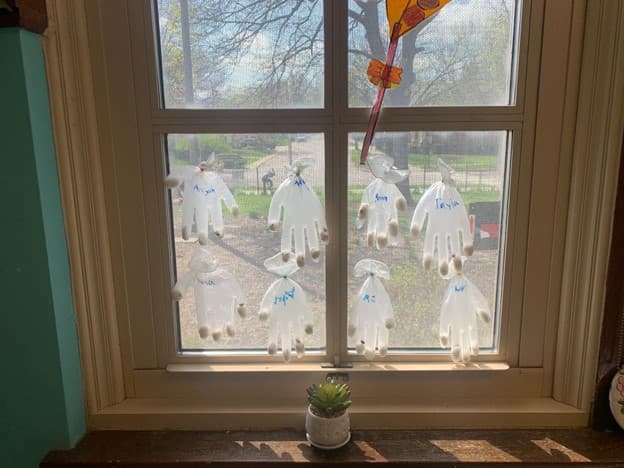Activities
Activity 1: (Garden Glove) When the Onceler chops down all the Truffula trees, students will see that as a result: the Barbaloots need to relocate, because their main source of food, Truffula fruit, is now gone. This leads into students learning about deforestation in a real world context and why we need trees and other plants. Students learn about how solar energy turns into chemical energy (photosynthesis) and plant their own seeds during their first experiment, the garden glove.
Materials: Cotton balls, seeds (beans work best), spray bottles of water, clear plastic gloves
Process: Each student takes 5 cotton balls and wets them with water. Push one cotton balls into each finger of the clear glove. Then drop seeds onto each cotton ball. If you use different types of seeds, have students label the finger each seed goes in. Tape the gloves onto a window so they receive direct sunlight. Students then observe the growth of their plants in a science notebook.

Sample Projects - created by Daphne Meyer’s Past Class (2022)
Activity 2: (Water Pollution) In the anchor text, The Lorax confronts the Onceler about pouring sludge from his factory into the water, saying “You're glumping the pond where the Humming-Fish hummed! No more can they hum, for their gills are all gummed.” From here, students will learn about water pollution, specifically oil spills. After researching what oil is and what it is used for, students will conduct an oil spill experiment. Students can also make a real-life connection to visiting Lake Michigan during the warm months.
Materials: Large clear plastic containers around the same size, Tap Water, Food coloring (optional), Vinegar, “Trash” (paper, candy wrappers)
Process: Fill a container full of water. Optional: teams may have different water containers. Keep a container of water on the teacher table. You will use this to compare with the polluted water. Have students mix food coloring and vinegar to create your “oil” or “sludge”. Pour the sludge and trash into the water, let sit overnight. Compare the students’ dirty water with the clean water. Record observations in science journal
Activity 3: (Greenhouse Effect) Lastly, the Onceler’s factory creates “smoggulous smog” so that the Swomee Swans can no longer live in the environment. This will lead into students' introduction to air pollution and its effects on the atmosphere. Students learn about greenhouse gasses and do a greenhouse effect experiment.
Materials: Two large glasses, or glass bowls of the same size, Ten ice cubes, Cold tap water, Clear plastic bag, a warm spot - this can be a sunny windowsill or use a heat lamp/light bulb as a heat source, thermometer - optional
Process: Put the same amount of water and five ice cubes into each glass or bowl. Cover one with the plastic bag. This represents the atmosphere around the Earth. Leave the other one uncovered. Put both in a warm spot. Observe and record in the science journal which ice melts first. If you have a thermometer, you can measure the temperature of the water after an hour.
Activity 4: (Environmental Campaign) To conclude the unit, students will learn about Greta Thunberg and other climate activists to inspire them to create their own environmental campaign using the information gained from the unit. Students will use their research tools (Google Classroom and EPIC Books) to create a visual display which will be hung around neighborhood buildings such as the library, post office, police, and fire station.
Materials: Paper, poster board, crayons, markers
Process: Students will research and create a poster about how to keep their neighborhood clean.

Comments: